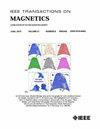磁悬浮重力补偿器零刚度点偏移的分析与修正
IF 1.9
3区 工程技术
Q3 ENGINEERING, ELECTRICAL & ELECTRONIC
引用次数: 0
摘要
在超精密制造领域,零刚度磁悬浮重力补偿器(zsmlgc)作为被动隔振装置被广泛应用于减轻地面干扰。然而,由永磁体的相对磁导率引起的磁斥力和引力的不对称性导致零刚度点远离几何中心,严重影响了隔离性能。本文提出了一种新的ZSMLGC拓扑来解决这个问题。建立了分析模型和数值模型来评估磁力和刚度特性,并在计算精度和效率方面进行了全面比较。在建模结果的基础上,提出了一种通过优化补偿磁体的几何结构来有效平衡速度和精度,同时消除零刚度点偏移的设计方法。仿真结果表明,该设计在几何中心精确地实现了零刚度点,在±2mm行程内垂直刚度小于5 N/m,悬浮力大于20 N以补偿重力载荷。本文章由计算机程序翻译,如有差异,请以英文原文为准。
Analysis and Correction of Zero Stiffness Point Shift in Magnetic Levitation Gravity Compensator
In the field of ultra-precision manufacturing, zero stiffness magnetic levitation gravity compensators (ZSMLGCs) are widely employed as passive vibration isolation devices to mitigate ground-induced disturbances. However, the asymmetry of the magnetic repulsive and attractive forces, induced by the relative permeability of the permanent magnets, results in a shift of the zero stiffness point away from the geometric center, significantly impairing isolation performance. This article proposes a novel ZSMLGC topology that addresses this issue. Both analytical and numerical models (NMs) are developed to evaluate magnetic force and stiffness characteristics, and a comprehensive comparison is conducted in terms of computational accuracy and efficiency. Based on the modeling results, a design method is introduced that effectively balances speed and accuracy while eliminating the zero stiffness point shift by optimizing the geometry of the compensating magnets. Simulation results demonstrate that the proposed design achieves zero stiffness point precisely at the geometric center, with vertical stiffness below 5 N/m within a ±2 mm stroke and a levitation force exceeding 20 N to compensate for the gravitational loads.
求助全文
通过发布文献求助,成功后即可免费获取论文全文。
去求助
来源期刊

IEEE Transactions on Magnetics
工程技术-工程:电子与电气
CiteScore
4.00
自引率
14.30%
发文量
565
审稿时长
4.1 months
期刊介绍:
Science and technology related to the basic physics and engineering of magnetism, magnetic materials, applied magnetics, magnetic devices, and magnetic data storage. The IEEE Transactions on Magnetics publishes scholarly articles of archival value as well as tutorial expositions and critical reviews of classical subjects and topics of current interest.
 求助内容:
求助内容: 应助结果提醒方式:
应助结果提醒方式:


